Key takeaways:
- Resilience in education involves helping students embrace failure as a learning opportunity, fostering a culture of perseverance.
- Incorporating growth mindset practices, such as acknowledging mistakes and celebrating effort, builds student confidence and resilience.
- Supportive classroom activities, like group collaborations and reflective journaling, create a sense of belonging and facilitate emotional growth.
- Success stories from students highlight the transformative power of overcoming challenges and the positive impact of supportive environments.
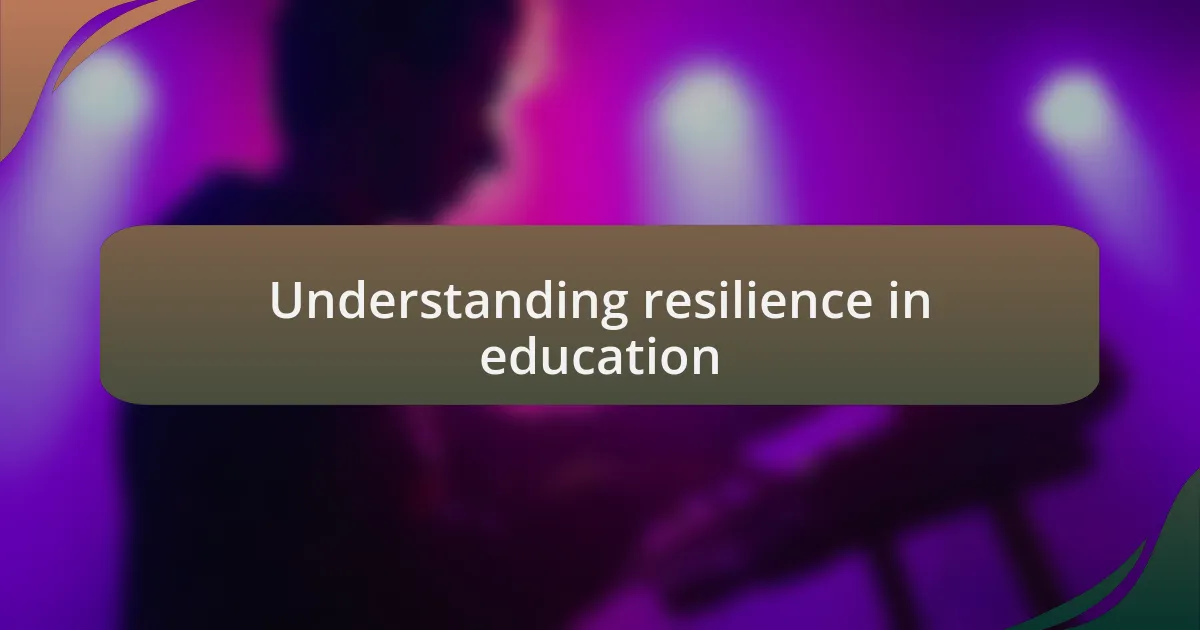
Understanding resilience in education
Understanding resilience in education is crucial for both teachers and students. I remember a time when a student of mine struggled with stage fright before a recital. I could see the fear in her eyes, and it struck me—how do we help our students transform those nerves into a source of strength?
Resilience, in essence, is about responding positively to challenges and setbacks. I’ve seen students grow tremendously when they learn to embrace failure as a stepping stone rather than a stumbling block. It’s like watching a flower bloom from the cracks of concrete. How can we foster that environment in our classrooms to let their potential shine?
In my experience, discussing resilience openly helps demystify it for students. I often share stories of my own failures in music, illustrating that even experienced musicians face obstacles. These narratives not only build trust but also create a culture where perseverance is valued. Isn’t it rewarding to witness a student rise from difficulty, transformed and ready to tackle the next challenge?
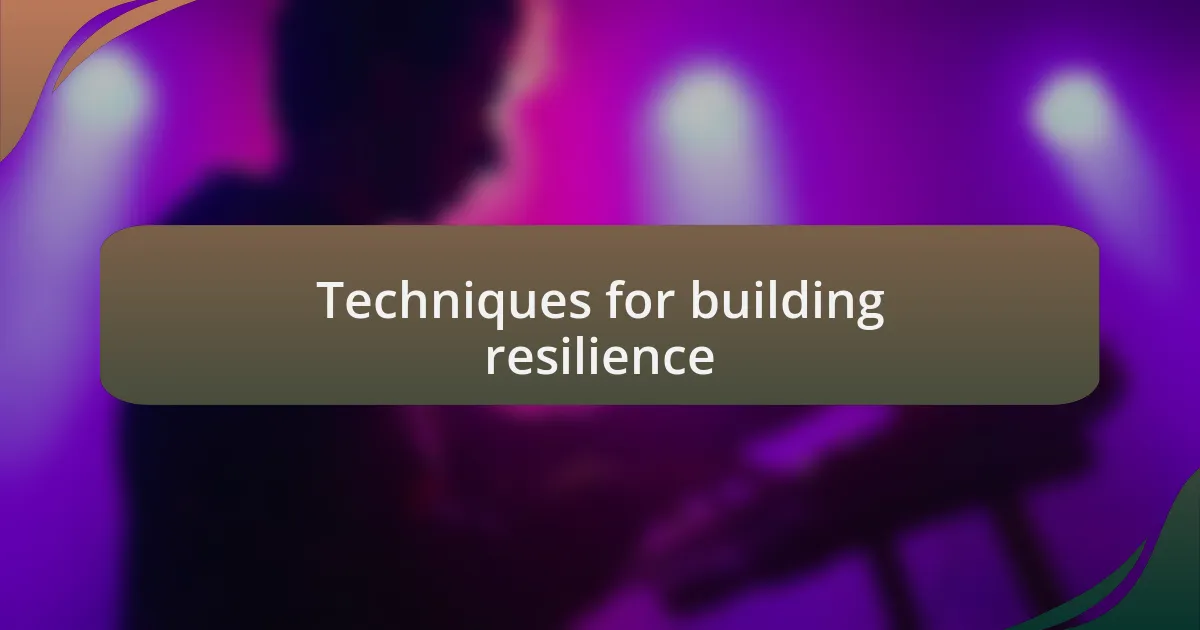
Techniques for building resilience
One effective technique I’ve found in building resilience is incorporating growth mindset practices into lessons. I often encourage my students to reflect on their progress, acknowledging that mistakes are part of the learning process. I remember the first time I invited a student to share her “failure” story—her violin broke just before a performance. Instead of being ashamed, she talked about how that experience taught her to adapt and find creative solutions, deepening her love for music.
Another strategy involves incremental challenges. I like to design exercises that gradually push students out of their comfort zones. For instance, I once asked a shy student to perform a solo piece for just one peer before tackling a larger audience. I could see the anxiety in her face, but that small victory built her confidence, allowing her to tackle bigger performances with poise. Isn’t it fascinating how a tiny step can lead to significant growth?
Promoting a supportive classroom community is also essential. I encourage group discussions where students share their experiences and support one another. I once facilitated a session where students paired up to discuss their struggles with practice routines. The relief on their faces as they realized they were not alone was palpable. Strengthening that camaraderie fosters a sense of belonging, which is vital for resilience.
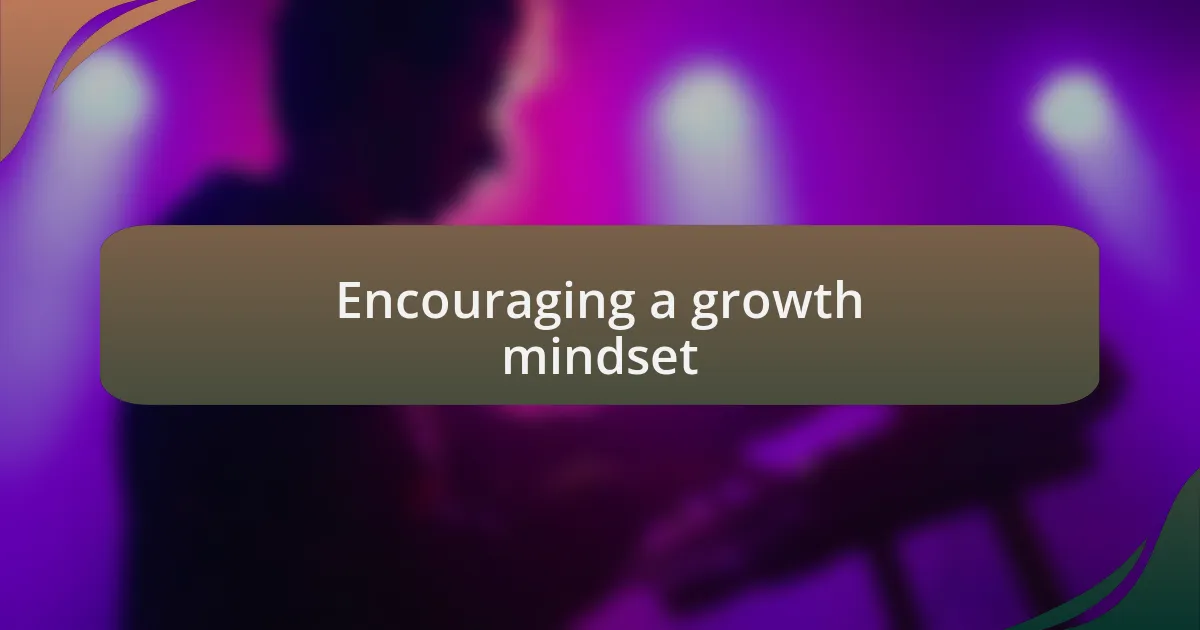
Encouraging a growth mindset
One of the most powerful ways I encourage a growth mindset is by highlighting the journey of improvement rather than focusing solely on achievements. I often share my own experiences of struggle, like the time I spent weeks mastering a challenging piece only to miss a note during a performance. It was a humbling moment, but I reminded my students that every musician faces setbacks, and each stumble is an opportunity to learn and grow. How often do we overlook the value of these lessons?
Additionally, I make it a point to celebrate effort in my classroom. I recall a time when a student worked tirelessly on a composition, pouring hours into experimenting with melodies and harmonies. While the final piece didn’t sound perfect, I praised her commitment and creativity. It’s these moments that reinforce the idea that effort, not just talent, leads to growth. Isn’t it empowering to know that hard work can make a real difference?
Finally, I often challenge my students to reflect on their own growth stories, prompting them with questions like, “What challenges have you faced, and how have they made you stronger?” One student articulated his struggle with a complex rhythm and how, after many practice sessions, it transformed from a daunting task into a joyful groove. Hearing these reflections not only builds resilience but also cultivates an environment where every experience—good or bad—is valued. Wouldn’t it be incredible if every student felt this power in their learning?
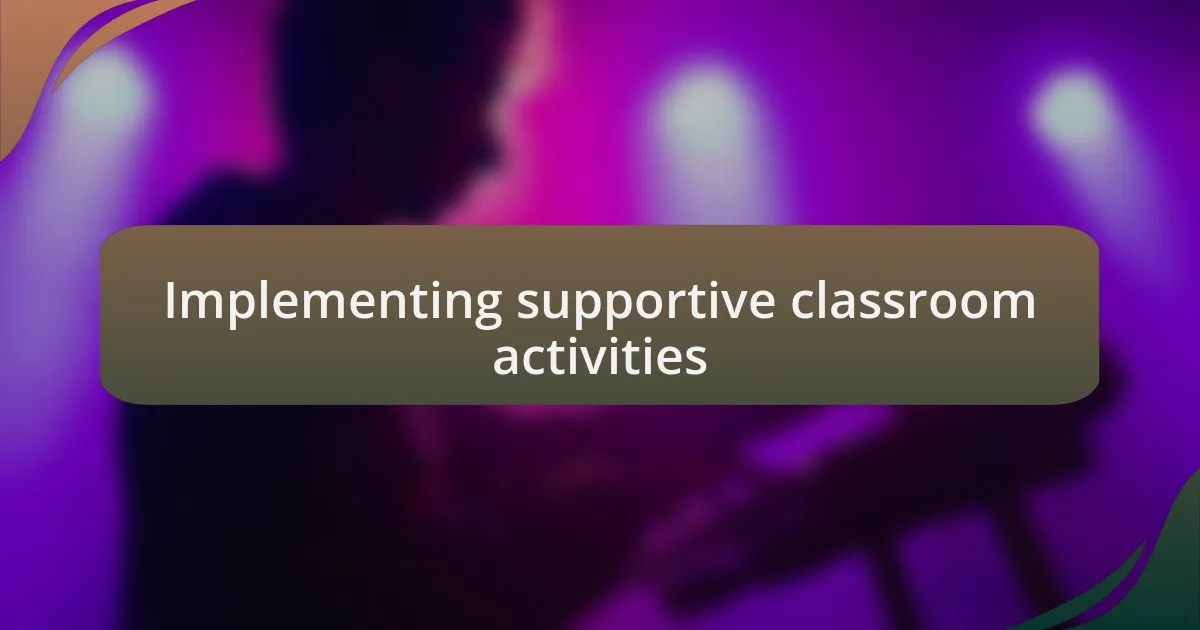
Implementing supportive classroom activities
Implementing supportive classroom activities is essential for fostering resilience in my students. For example, I often organize group jam sessions where students collaborate on improvisation exercises. Just the other day, I noticed one shy student slowly opening up as he found his voice alongside his peers. This kind of peer interaction not only nurtures creativity but also helps students build confidence in their abilities. How often do we find strength in community?
I also encourage daily reflection time where students can journal about their musical experiences. Recently, a student shared a profound moment about overcoming anxiety during a solo performance. This simple act of writing allowed her to articulate her emotions and reinforce her journey. It’s fascinating to see how reflecting can transform fear into motivation, don’t you think?
Furthermore, I incorporate activities that require accountability, such as peer reviews of compositions. During one session, a student presented her piece and received constructive feedback from her classmates. Watching her accept the criticism with a smile reminded me of the importance of creating a safe space for growth. When students learn to embrace feedback, it equips them with resilience that extends beyond music, wouldn’t you agree?
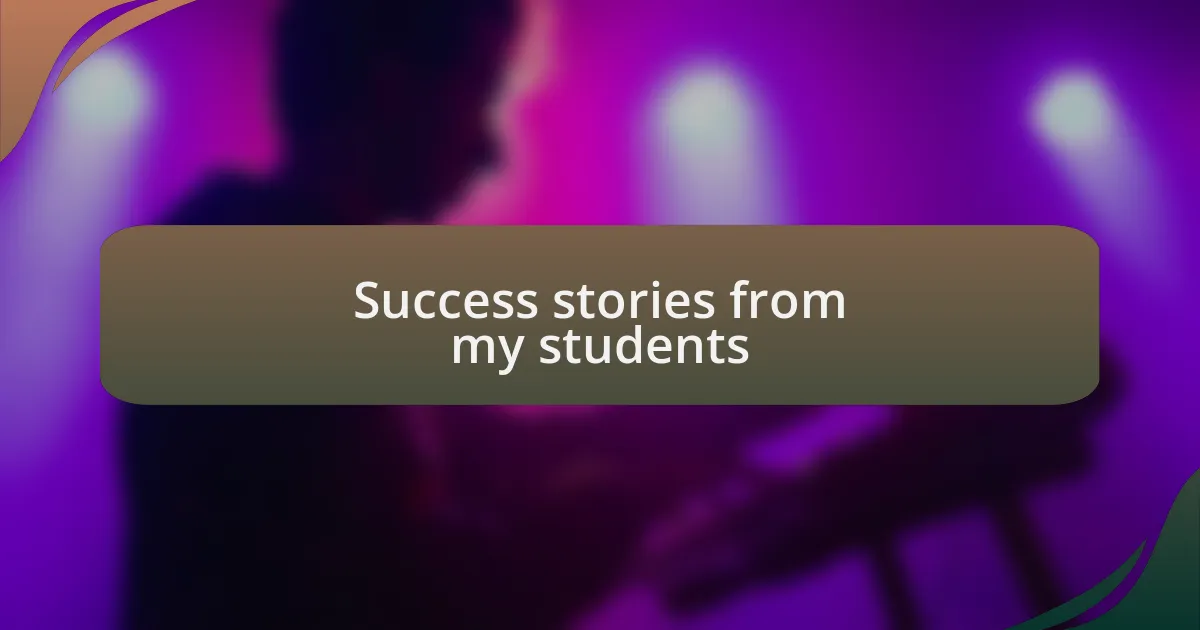
Success stories from my students
I remember a young pianist who initially struggled with self-doubt. After months of practice and encouragement, he performed at a school concert. Seeing him shine on stage, smiling broadly, made every ounce of effort worthwhile. That moment wasn’t just a personal triumph; it inspired his classmates to believe in their own potential too. Doesn’t it feel good to witness someone transform before your eyes?
Another student, who had previously been terrified of failure, took a leap by trying out for the school’s jazz band. To my amazement, not only did she make the group, but she also found herself thriving in that challenging environment. Her joy was palpable, and her experience taught me that stepping out of one’s comfort zone is often where the magic happens. Isn’t it incredible how music can serve as a catalyst for such growth?
One of my students shared a touching story about her challenges with stage fright. After gradually performing in front of smaller groups, she conquered her fears and delivered a stunning solo at a community event. Hearing her describe the exhilaration of overcoming her fears brought tears to my eyes. Moments like these remind me of the resilience music fosters and how stories of perseverance resonate deeply within us all. How can we not celebrate these victories?